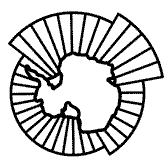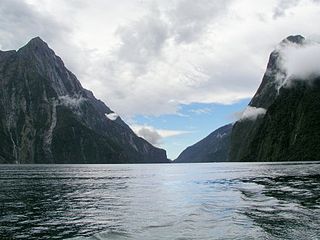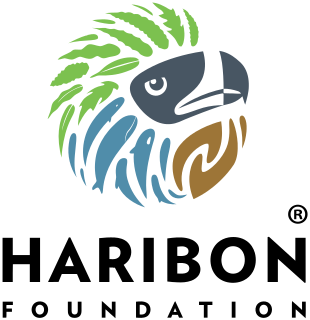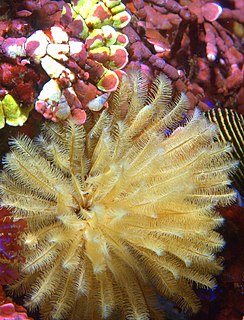Related Research Articles

The Convention on the Conservation of Antarctic Marine Living Resources, also known as the Commission for the Conservation of Antarctic Marine Living Resources, and CCAMLR, is part of the Antarctic Treaty System.

The Channel Islands National Marine Sanctuary is a sanctuary off the Pacific coast of Southern California. The National Marine Sanctuary program is administered by the National Oceanic and Atmospheric Administration.

Marine protected areas (MPA) are protected areas of seas, oceans, estuaries or in the US, the Great Lakes. These marine areas can come in many forms ranging from wildlife refuges to research facilities. MPAs restrict human activity for a conservation purpose, typically to protect natural or cultural resources. Such marine resources are protected by local, state, territorial, native, regional, national, or international authorities and differ substantially among and between nations. This variation includes different limitations on development, fishing practices, fishing seasons and catch limits, moorings and bans on removing or disrupting marine life. In some situations, MPAs also provide revenue for countries, potentially equal to the income that they would have if they were to grant companies permissions to fish. The value of MPA to mobile species is unknown.

Originally called the International Ligurian Sea Cetacean Sanctuary, what is now known as the Pelagos Sanctuary for Mediterranean Marine Mammals is a Marine Protected Area aimed at the protection of marine mammals (cetaceans). It covers an area of approximately 84,000 km², comprising the waters between Toulon, Capo Falcone, Capo Ferro and Fosso Chiarone (Tuscany).

The Haribon Foundation for the Conservation of Natural Resources, Inc., simply known as Haribon Foundation, is a nature conservation organization in the Philippines. The name "Haribon" is a reference to the Philippine eagle. The group was founded in 1972 as a bird-watching society.

The Marine Life Protection Act (MLPA) was passed in 1999 and is part of the California Fish and Game Code. The MLPA requires California to reevaluate all existing marine protected areas (MPAs) and potentially design new MPAs that together function as a statewide network. The MLPA has clear guidance associated with the development of this MPA network. MPAs are developed on a regional basis with MLPA and MPA-specific goals in mind and are evaluated over time to assess their effectiveness in meeting these goals. The main six goals of the Marine Life Protection Act are to maintain the diversity of marine ecosystems, conserve its populations, better educate people on human-marine life interactions, protect habitats, and effectively enforce MPAs. The establishment of this policy is an important step in expanding science-based management and decision making regarding policies.

The wildlife of Libya is spread over the Mediterranean coastline and encompasses large areas of the Saharan desert. The protection of wildlife is provided through appropriate legislation in seven national parks, five reserves, 24 protected areas, two wetlands under Ramsar Convention, and also in other areas. Apart from these, there are also five UNESCO World Heritage Sites related to culture. The most important national parks are the El-Kouf National Park and Karabolli National Park. The well known nature reserves are the Benghazi Reserve and the Zellaf Reserve. The wildlife species recorded in the country are 87 mammals and 338 species of birds.

Carmel Bay State Marine Conservation Area (SMCA) is a marine protected area in Carmel Bay. Carmel Bay is adjacent to the city of Carmel-by-the-Sea and is near Monterey, on California’s central coast. The marine protected area covers 2.12 square miles. Recreational fishing of finfish and limited commercial taking of kelp is permitted within the SMCA.
A Marine Protected Area Network or MPA network is a network of Marine Protected Areas or Marine Reserves.
Coral Reef Initiative for the South Pacific (CRISP) is a French inter-ministerial project founded in 2002. Its aims focus on developing a vision for the future for coral reef eco-systems and the communities that depend on them within the French overseas territories and Pacific Island developing countries. Programme coordination is provided by the CRISP Coordination Unit and a programme manager who is supported by scientific counselors. The programme is hosted by the Secretariat of the Pacific Community who is located in Nouméa, New-Caledonia. CRISP is under the institutional protection from the Pacific Community and the South Pacific Regional Environment Programme. It is a regional initiative that promotes the protection and sustainable management of the coral reefs of the Pacific island states.
California Ocean Science Trust (OST) is a nonprofit 501(c)(3) public-benefit corporation established pursuant to the California Ocean Resources Stewardship Act (CORSA) of 2000. The mission of OST is to advance a constructive role for science in decision-making by promoting collaboration and mutual understanding among scientists, citizens, managers, and policymakers working toward sustained, healthy, and productive coastal and ocean ecosystems. Because OST is not a government entity, it can act as an independent and unbiased broker between policymakers and managers, and the scientific community.

Coastal & Marine Union (EUCC) is a nonprofit organization with a membership of around 500 institutions, NGOs and experts, in 40 countries. Its network at large involves about 2500 professionals involved in coastal and marine management issues. Founded in 1989 with the aim of promoting coastal management by bridging the gap between scientists, environmentalists, site managers, planners and policy makers, it has grown into the largest network of coastal practitioners and experts in Europe, with 13 National Branches, an International Secretariat in Leiden, and offices in Barcelona (Spain), Biarritz (France), Warnemünde (Germany), Szczecin (Poland), Klaipeda (Lithuania) and Sliema (Malta). EUCC's working area is Europe and its neighbouring regions, especially the Black Sea and the Mediterranean.

Hope Spots are ecologically unique areas of the ocean designated for protection under a global conservation campaign overseen by Mission Blue, a non-profit organization founded by Sylvia Earle with her 2009 TED prize wish.
EcoOcean is an Israeli non-profit environmental organization that was founded in 2002, working to preserve the marine and coastal environments, by promoting marine research, education and community engagement.
A marine protected area of South Africa is an area of coastline or ocean within the exclusive economic zone (EEZ) of the Republic of South Africa that is protected in terms of specific legislation for the benefit of the environment and the people who live in it and use it. An MPA is a place where marine life can thrive under less pressure than unprotected areas, like underwater parks, and this healthy environment can benefit neighbouring areas.

The De Hoop Marine Protected Area lies between Arniston and the mouth of the Breede River on the south coast of South Africa adjacent to the De Hoop Nature Reserve. The MPA is 51 kilometres long, and extends 5 nautical miles to sea. The whole MPA is a restricted area and is part of the migratory route and calving area for Southern right whales. The area protects habitats for several economically important inshore reef fish species, and ensures the retention of marine biomass in this part of the coast. The limestone coastline is includes archaeological sites and middens that date back centuries. The MPA is close to the Breede River estuary and, provides protection for species like cob that breed in the estuary and then return to the ocean.

The Helderberg Marine Protected Area is a small marine conservation area on the north-eastern side of False Bay in the Western Cape province of South Africa, It lies between the mouths of the Lourens River in the Strand, and the Eerste River in Macassar.

The Cape Canyon Marine Protected Area is an offshore marine protected area on the continental shelf edge lying approximately 12 nautical miles southwest of Saldanha off the Western Cape in the exclusive economic zone of South Africa.

In Scotland, Marine Protected Areas (MPAs) are areas of sea defined so as to protect to habitats, wildlife, geology, undersea landforms, historic shipwrecks, and to demonstrate sustainable management of the sea. As of December 2020, approximately 37% of Scotland's seas are covered by the Scottish MPA network, which comprises 244 sites in total.

Marine Protected Areas (MPAs) are zones within Canadian waters where the marine environment enjoys a high level of environmental protection. Marine Protected Areas are governed by the Oceans Act of 1996 and administered by Fisheries and Oceans Canada.
References
- ↑ "About MedPAN". medpan.org.